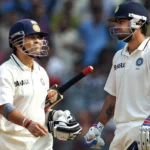Cricket is a gentleman’s game with a rich history and a dedicated global following. Understanding the intricacies of Cricket Rules is vital for both players and enthusiasts. In this comprehensive guide, we will delve into the world of Cricket Rules, breaking down the game’s fundamentals, technicalities, and unique aspects. Whether you’re a seasoned player or a newcomer to the sport, this article will provide you with valuable insights to enhance your cricketing knowledge.
Cricket Rules
The Pitch
Cricket is played on a rectangular field known as a pitch. The pitch is 22 yards long and is essential to the game’s dynamics. It consists of three main components: the stumps, the creases, and the popping crease. The stumps are three wooden poles placed at each end of the pitch, while the creases are marked lines that define the batsmen’s territory. The popping crease is a crucial line that dictates the bowler’s delivery point.
The Teams
A standard cricket match involves two teams, each comprising 11 players. One team bats, while the other bowls and fields. The team that scores the most runs wins. Each team takes turns to bat and bowl, with the objective of outperforming their opponents.
Innings
In cricket, an inning refers to the batting and bowling phase of a team. A standard cricket match consists of two innings for each team, with each inning ending when ten batsmen are dismissed or a predetermined number of overs are bowled. Test matches can have up to four innings.
Runs and Scoring
Scoring in cricket is primarily based on runs. Batsmen score runs by hitting the ball and running between the creases. The boundary, marked by a rope or a fence, rewards batsmen with four runs for hitting the ball along the ground and six runs for clearing the boundary in the air.
Wickets and Dismissals
The primary objective of the bowling team is to dismiss the opposing batsmen. Dismissals can occur in various ways, including bowled, caught, LBW (leg before wicket), run-out, and stumped. Bowlers use a combination of pace, spin, and tactics to outwit the batsmen.
Fielding Positions
Cricket has a unique set of fielding positions, each strategically placed to defend against specific types of shots. Fielding positions include slips, gully, mid-off, mid-on, square leg, and deep fine leg, among others.
Umpires and Decision-Making
Umpires play a pivotal role in enforcing the rules of cricket and making crucial decisions during a match. The Decision Review System (DRS) allows teams to challenge umpires’ decisions using technology.
Bowling Styles
Cricket features various bowling styles, including fast bowling, swing bowling, seam bowling, and spin bowling. Each style demands different techniques and skills.
Powerplays and Restrictions
Limited-overs formats of cricket introduce powerplays and fielding restrictions, adding excitement and strategy to the game. Powerplays limit the number of fielders outside the 30-yard circle, while fielding restrictions apply during certain phases of the game.
Cricket Rules FAQs
What is a No-Ball in Cricket?
A No-Ball is an illegal delivery in cricket, usually due to the bowler overstepping the crease. When a No-Ball is bowled, the batting team is awarded an additional run, and the batsman cannot be dismissed by that delivery.
How Many Overs are in a T20 Match?
A T20 match consists of 20 overs per inning for each team, resulting in a total of 40 overs in the entire match.
What is the Duckworth-Lewis Method?
The Duckworth-Lewis Method is a mathematical formula used to adjust target scores in limited-overs matches affected by rain or interruptions. It ensures a fair outcome in such situations.
Can a Batsman Be Given Out for Obstructing the Field?
Yes, a batsman can be given out for obstructing the field if they intentionally obstruct a fielder’s attempt to run them out or catch the ball.
What is a Super Over in Cricket?
A Super Over is a tie-breaking method used in limited-overs matches when the main game ends in a tie. Each team faces a single over of six deliveries, and the team with the most runs wins.
How Does the LBW Rule Work?
The LBW (leg before wicket) rule comes into play when the ball hits the batsman’s leg before hitting the stumps. To be given out LBW, certain conditions, such as the ball pitching in line with the stumps and impacting in line, must be met.
Conclusion
Cricket is a sport steeped in tradition and strategy, with a unique set of rules that add depth and excitement to the game. Whether you’re a player, a spectator, or someone looking to expand their knowledge, understanding the Cricket Rules is essential. This comprehensive guide has provided insights into the key aspects of the game, from the pitch to scoring, dismissals, and more. Now, as you delve deeper into the world of cricket, you’ll be better equipped to appreciate the nuances and strategies that make this sport truly exceptional.
That’s all! You can also check out Tug of War Rules and Throwball Rules.

Sports Beats India is a website that covers all the latest sports news from India. We provide comprehensive coverage of all the major sports including cricket, football, hockey, tennis and more. We also have a dedicated team of writers who provide expert analysis and opinion on all the major sporting events taking place in India.






